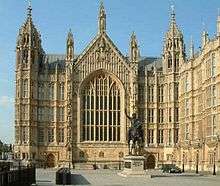Augustus Pugin
| Augustus Welby Northmore Pugin | |
|---|---|
 | |
| Born |
1 March 1812 Keppel Street, Bloomsbury, London |
| Died |
14 September 1852 (aged 40) Ramsgate, Kent, England |
| Occupation | Architect |
| Buildings | Palace of Westminster |
| Design | many Victorian churches |
Augustus Welby Northmore Pugin (1 March 1812 – 14 September 1852) was an English architect, designer, artist and critic, chiefly remembered for his pioneering role in the Gothic Revival style; his work culminated in the interior design of the Palace of Westminster. Pugin designed many churches in England, and some in Ireland and Australia.[1] Pugin was the son of Auguste Pugin, and the father of E.W. and Peter Paul Pugin, who continued his architectural firm as Pugin & Pugin.[2]
Life
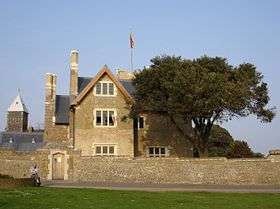
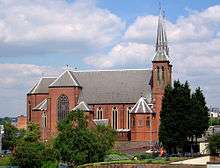
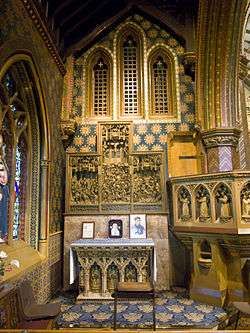
Pugin was the son of a French draughtsman, Auguste Pugin, who had come to England as a result of the French Revolution and had married Catherine Welby of the Denton, Lincolnshire Welby family.[3] Augustus was born at his parents' house in Bloomsbury. Between 1821 and 1838 Pugin's father had published a series of volumes of architectural drawings, the first two entitled, Specimens of Gothic Architecture, and the following three, Examples of Gothic Architecture, that were to remain both in print and the standard references for Gothic architecture for at least the next century.
Religious background
As a child he was taken each Sunday by his mother to the services of the fashionable Scottish Presbyterian preacher Edward Irving (later founder of the Holy Catholic Apostolic Church), at his chapel in Cross Street, Hatton Garden.[4] He soon rebelled against this version of Christianity: according to Benjamin Ferrey, Pugin "always expressed unmitigated disgust at the cold and sterile forms of the Scotch church; and the moment he broke free from the trammels imposed on him by his mother, he rushed into the arms of a church which, pompous by its ceremonies, was attractive to his imaginative mind".[5]
Education and early ventures
Pugin learned drawing from his father, and for a while attended Christ's Hospital. After leaving school he worked in his father's office, and in 1825 and 1827 accompanied him on visits to France.[6] His first commissions independent of his father were for designs for the goldsmiths Rundell and Bridge, and for designs for furniture at Windsor Castle, from the upholsterers Morrel and Seddon. Through a contact made while working at Windsor, he became interested in the design of theatre scenery, and in 1831 obtained a commission to design the sets for the production of a new opera called Kenilworth at Covent Garden.[7] He also developed an interest in sailing, and briefly commanded a small merchant schooner trading between Britain and Holland, which allowed him to import examples of furniture and carving from Flanders,with which he later furnished his house at Ramsgate.[8] During one voyage in 1830 he was wrecked on the Scottish coast near Leith,[9] as a result of which he came into contact with Edinburgh architect James Gillespie Graham, who advised him to abandon seafaring for architecture.[10] He then set up a business supplying historically accurate carved wood and stone details for the increasing number of buildings being constructed in the Gothic style, but the enterprise soon failed.[8]
Marriages
In 1831, aged nineteen, Pugin married the first of his three wives, Anne Garnet.[11] Anne died a few months later in childbirth, leaving him with a daughter. He had a further six children, including the architect Edward Pugin, with his second wife, Louisa Button, who died in 1844. His third wife, Jane Knill, kept a journal of their married life together, between their marriage in 1848 and his death; it was later published.[12] Their son was Peter Paul Pugin.
Salisbury
Following his second marriage in 1833, Pugin moved to Salisbury with his wife,[13] and in 1835 bought half an acre of land, at Alderbury, about a mile-and-a-half outside the town, On this he built a medieval-inspired house for his family, called "St Marie's Grange".[14] Charles Locke Eastlake said of it "he had not yet learned the art of combining a picturesque exterior with the ordinary comforts of an English home".[15]
Conversion to Roman Catholicism
In 1834, Pugin became a Roman Catholic convert,[16] and was received into the Church in the following year.[17] Pugin's father Auguste-Charles Pugin, was a Frenchman who had come to England as a result of the French Revolution. It is probable that he, like many others, converted to the Anglican faith in order to get work (it was highly unlikely that any non-Anglican could obtain a government commission or tender for example).
British society at this time had many restrictions on any person not adhering to the state religion of the Anglican Church. Non-Anglicans could not attend University, for example as well as being unable to stand for parish or city councils, be an MP, serve as a policeman, in the armed forces or even on a jury. A number of reforms in the early 19th century changed this situation, the most important of which was the Roman Catholic Relief Act of 1829 which specifically abolished the restrictions on Catholics. After 1829 it became (in theory at least) possible to have a successful career while being a Catholic - this was the background to A W Pugin's conversion to the Roman Catholic Church.
However his conversion also brought him into contact with new patrons and employers. In 1832 he had made the acquaintance of John Talbot, 16th Earl of Shrewsbury, a Roman Catholic, sympathetic to his aesthetic views who employed him in alterations and additions to his residence Alton Towers, which subsequently led to many other commissions.[18] Shrewsbury commissioned him to build St. Giles' Catholic Church, Cheadle, completed in 1846, and Pugin was also responsible for designing the oldest Catholic church in Shropshire, St Peter and Paul at Newport,
Contrasts
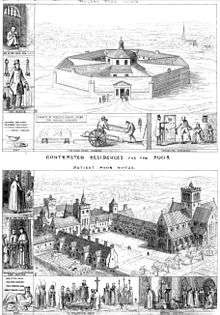
In 1836, Pugin published Contrasts, a polemical book which argued for the revival of the medieval Gothic style, and also "a return to the faith and the social structures of the Middle Ages".[19] Each plate in the book selected a type of urban building and contrasted the 1830 example with its 15th-century equivalent. In one example, Pugin contrasted a medieval monastic foundation, where monks fed and clothed the needy, grew food in the gardens – and gave the dead a decent burial – with "a panopticon workhouse where the poor were beaten, half starved and sent off after death for dissection. Each structure was the built expression of a particular view of humanity: Christianity versus Utilitarianism."[19] Pugin's biographer, Rosemary Hill, wrote: "The drawings were all calculatedly unfair. King's College London was shown from an unflatteringly skewed angle, while Christ Church, Oxford, was edited to avoid showing its famous Tom Tower because that was by Christopher Wren and so not medieval. But the cumulative rhetorical force was tremendous."[19]
Ramsgate
In 1841 he left Salisbury,[20] finding it an inconvenient base for his growing architectural practice.[21] He sold St Marie's Grange at a considerable financial loss,[22] and moved temporarily to Cheyne Walk, Chelsea. He had however already purchased a piece of land at the West Cliff, Ramsgate, where he proceeded to build himself a large house and, at his own expense, a church on which he worked whenever funds allowed. His second wife died in 1844 and was buried at St. Chad's, Birmingham, a church which he had designed himself.[23]
Architectural commissions
Following the destruction by fire of the Palace of Westminster in 1834, Pugin was employed by Sir Charles Barry to supply interior designs for his entry to the architectural competition which would determine who would build the new Palace of Westminster. Pugin also supplied drawings for James Gillespie Graham's entry.[24] This followed a period of employment when Pugin had worked with Barry on the interior design of King Edward's School, Birmingham. Despite his conversion to Catholicism in 1834, Pugin designed and refurbished both Anglican and Catholic churches throughout the country.
Other works include St Chad's Cathedral, Erdington Abbey and Oscott College, all in Birmingham. He also designed the college buildings of St Patrick and St Mary in St. Patrick's College, Maynooth; though not the college chapel. His original plans included both a chapel and an aula maxima (great hall), neither of which were built because of financial constraints. The college chapel was designed by a follower of Pugin, the Irish architect J.J. McCarthy. Also in Ireland, Pugin designed St Mary's Cathedral in Killarney, St Aidan's Cathedral, Enniscorthy (renovated in 1996) and the Dominican church of the Holy Cross in Tralee. He revised the plans for St Michael's Church in Ballinasloe, Galway. Pugin was also invited by Bishop Wareing to design what eventually became Northampton Cathedral, a project that was completed in 1864 by Pugin's son Edward Welby Pugin.
Pugin visited Italy in 1847; his experience there confirmed his dislike of Renaissance and Baroque architecture, but he found much to admire in the medieval art of northern Italy.[25]
Illness and death
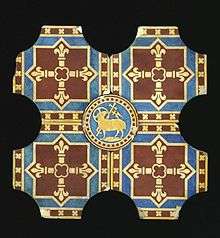
In February 1852, while travelling with his son Edward by train, Pugin suffered a total breakdown and arrived in London unable to recognise anyone or speak coherently. For four months he was confined to a private asylum, Kensington House. In June, he was transferred to the Royal Bethlem Hospital, popularly known as Bedlam.[26] At that time, Bethlem Hospital was opposite St George's Cathedral, Southwark, one of Pugin's major buildings, where he had married his third wife, Jane, in 1848. Jane and a doctor removed Pugin from Bedlam and took him to a private house in Hammersmith where they attempted therapy, and he recovered sufficiently to recognise his wife.[26] In September, Jane took her husband back to The Grange in Ramsgate, where he died on 14 September 1852.[26] He is buried in his church next to The Grange, St Augustine's, Ramsgate.
On Pugin's death certificate, the cause listed was "convulsions followed by coma". Pugin's biographer, Rosemary Hill, suggests that, in the last year of his life, he was suffering from hyperthyroidism which would account for his symptoms of exaggerated appetite, perspiration, and restlessness. Hill writes that Pugin's medical history, including eye problems and recurrent illness from his early twenties, suggests that he contracted syphilis in his late teens, and this may have been the cause of his death at the age of 40.[27]
Palace of Westminster
In 1846, having won the architectural competition to design the new Palace of Westminster, Sir Charles Barry asked Pugin to supply detailed designs for the interior of the new building, including stained glass, metalwork, wood carving, upholstery, furniture and a royal throne. Pugin's biographer, Rosemary Hill, shows that Barry designed the Palace as a whole, and only he could co-ordinate such a large project and deal with its difficult paymasters, but he relied entirely on Pugin for its Gothic interiors, wallpapers and furnishings.[28]
At the end of Pugin's life, in February 1852, Barry visited him in Ramsgate and Pugin supplied a detailed design for the iconic Palace clock tower, officially dubbed the Elizabeth Tower, but more popularly known as Big Ben. The design is very close to earlier designs by Pugin, including an unbuilt scheme for Scarisbrick Hall, Lancashire. The tower was Pugin's last design before descending into madness. In her biography, Hill quotes Pugin as writing of what is probably his best known building: "I never worked so hard in my life [as] for Mr Barry for tomorrow I render all the designs for finishing his bell tower & it is beautiful & I am the whole machinery of the clock."[29] Hill writes that Barry omitted to give any credit to Pugin for his huge contribution to the design of the new Houses of Parliament.[30] In 1867, after the deaths of both Pugin and Barry, Pugin's son Edward published a pamphlet, Who Was the Art Architect of the Houses of Parliament, a statement of facts, in which he asserted that his father was the "true" architect of the building, and not Barry.[31]
Pugin in Ireland
Pugin was invited to Ireland by the Redmond family, initially to work in County Wexford. He arrived in Ireland in 1838 at a time of greater religious tolerance, when Catholic churches were permitted to be built. Most of his work in Ireland consisted of religious buildings. Pugin demanded the highest quality of workmanship from his craftsmen, particularly the stonemasons. His subsequent visits to the country were brief and infrequent. He was the main architect of St. Aidan's Roman Catholic Cathedral for the diocese of Ferns in Enniscorthy, Co.Wexford.
Pugin and Australia
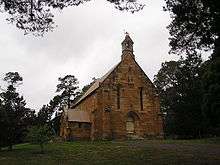
The first Catholic Bishop of New South Wales, Australia, John Bede Polding, met Pugin and was present when St. Chad's Cathedral, Birmingham and St. Giles' Catholic Church, Cheadle were officially opened. Polding persuaded Pugin to design a series of churches for him. Although a number of churches do not survive, St Francis Xavier's in Berrima, New South Wales is regarded as a fine example of a Pugin church.
St Stephen's Chapel, now in the cathedral grounds in Elizabeth Street, Brisbane, was built to a design of A.W.N. Pugin. Construction began in 1848, and the first mass in the church was celebrated on 12 May 1850. In 1859 James Quinn was appointed Bishop of Brisbane, Brisbane becoming a diocese, and Pugin's small church became a cathedral. When the new cathedral of St Stephen was opened in 1874 the small Pugin church became a school room, and later church offices and storage room. It was several times threatened with demolition before its restoration in the 1990s.
In Sydney, there are several altered examples of his work, namely St Benedict's, Chippendale; St Charles Borromeo, Ryde; the former church of St Augustine of Hippo (next to the existing church), Balmain; and St Patrick's Cathedral, Parramatta, which was gutted by a fire in 1996 . Pugin's legacy in Australia, is particularly of the idea of what a church should look like:
Pugin's notion was that Gothic was Christian and Christian was Gothic,... It became the way people built churches and perceived churches should be. Even today if you ask someone what a church should look like, they'll describe a Gothic building with pointed windows and arches. Right across Australia, from outback towns with tiny churches made out of corrugated iron with a little pointed door and pointed windows, to our very greatest cathedrals, you have buildings which are directly related to Pugin's ideas.[32]
After his death A.W.N. Pugin's two sons; E. W. Pugin and Peter Paul Pugin, continued operating their father's architectural firm under the name Pugin & Pugin. This work includes most of the "Pugin" buildings in Australia and New Zealand.
Reputation and influence
Eastlake, writing in 1872, noted that the quality of construction in Pugin's buildings was often poor, and believed he was lacking in technical knowledge, his strength lying more in his facility as a designer of architectural detail.[33]
Pugin's legacy began to fade immediately after his death.[27] This was partly due to the hostility of John Ruskin. In his appendix to The Stones of Venice (1851), Ruskin wrote of Pugin, "he is not a great architect but one of the smallest possible or conceivable architects."[34] Contemporaries and admirers of Pugin, including Sir Henry Cole, protested at the viciousness of the attack and pointed out that Ruskin's idea on style had much in common with Pugin's.[34] After Pugin's death, Ruskin "outlived and out-talked him by half a century".[27] Sir Kenneth Clark wrote, "If Ruskin had never lived, Pugin would never have been forgotten."[35]
Nonetheless, Pugin's architectural ideas were carried forward by two young architects who admired him and had attended his funeral, W. E. Nesfield and Norman Shaw. George Gilbert Scott, William Butterfield and George Edmund Street were influenced by Pugin's designs, and continued to work out the implication of ideas he had sketched in his writings.[27] In Street's office, Philip Webb met William Morris and they went on to become leading members of the English Arts and Crafts Movement.[27] When the German critic Hermann Muthesius published his admiring and influential study of English domestic architecture, Das Englische Haus (1904), Pugin was all but invisible, yet "it was he... who invented the English House that Muthesius so admired".[27]
On 23 February 2012 the Royal Mail released a first class stamp featuring Pugin as part of its "Britons of Distinction" series. The stamp image depicts an interior view of the Palace of Westminster.[36]
List of Pugin's principal buildings in the United Kingdom
House designs, with approximate date of design and current condition
- Hall of John Halle, Salisbury (1834) – Restoration of an existing hall of 1470, largely intact but extended prior to and following the 1834 restoration; now in use as the vestibule to a cinema
- St Marie's Grange, Alderbury (1835) – altered; a private house
- Derby presbytery (1838) – demolished
- Scarisbrick Hall (1837) – largely intact; a school
- Uttoxeter presbytery (1838) – largely intact; in use
- Keighley presbytery (1838) – altered; in use
- Bishop's House, Birmingham (1840) – demolished
- Warwick Bridge presbytery – intact with minor alterations; in use
- Clergy House, Nottingham (1841) – largely intact; in use
- Garendon Hall scheme (1841) – not executed
- Bilton Grange (1841) – intact; now a school
- Oxenford Grange farm buildings (1841) – intact; private house and farm
- Cheadle presbytery (1842) – largely intact; now a private house
- Woolwich presbytery (1842) – largely intact; in use
- Brewood presbytery (1842) – largely intact; in use
- St Augustine's Grange ("The Grange"), Ramsgate (1843) – restored by the Landmark Trust
- Alton Castle (1843) – intact; a Catholic youth centre
- Alton Towers – largely intact; used as a theme park and for the 'Hex' ride
- Oswaldcroft, Liverpool (1844) – altered; a residential home
- Dartington Hall scheme (1845) – unexecuted
- Lanteglos-by-Camelford rectory (1846) – much altered; a hotel
- Rampisham rectory (1846) – unaltered; private house
- Woodchester Park scheme (1846) – unexecuted
- Fulham presbytery (1847) – intact; in use
- Leighton Hall, Powys (1847) – intact; in use
- Banwell Castle (1847) – intact now a hotel and restaurant
- Wilburton Manor House (1848) – largely intact; a school
- Pugin's Hall (1850) – intact, a private house
- St Edmund's College Chapel (1853) - intact, a school and chapel
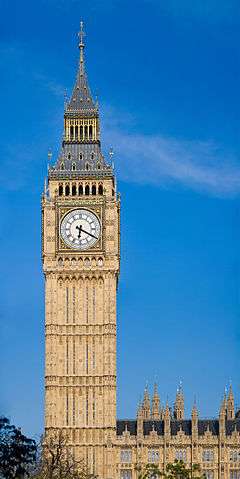
Institutional designs
- Convent of Mercy, Bermondsey (1838) – destroyed
- Mount St. Bernard Abbey (1839) – largely intact; in use
- Downside Abbey schemes (1839 and 1841) – unexecuted
- Convent of Mercy, Handsworth 1840 – largely intact; in use
- St John's Hospital, Alton (1841) – intact; in use
- Convent of St Joseph, school and almshouses, Chelsea, London (1841) – altered; used as a school
- Convent of Mercy, Liverpool (1841 – and from 1847) – demolished
- Spechley school and schoolmaster's house (1841) – intact, now a private house
- Balliol College, Oxford, scheme (1843) – unexecuted
- Ratcliffe College (1843) – partially executed; largely intact; in use
- Liverpool Orphanage (1843) – demolished
- Magdalen College School, Oxford, schemes (1843–44) – unexecuted
- Convent of Mercy, Nottingham (1844) – altered; private flats
- Mercy House and cloisters, Handsworth (1844–45) – cloisters intact; otherwise destroyed
- Cotton College (1846) – alterations to older house for RC school use, now derelict
- St Anne's Bedehouses, Lincoln, (1847) – intact; in use
- Convent of the Good Shepherd, Hammersmith, London (1848) – demolished
- Convent of St Joseph's, Cheadle (1848) – intact; private house
- King Edward's School, Birmingham (design of parts of interior) (1838) –
Major ecclesiastical designs
- St James's, Reading (1837) – altered
- St Mary's, Derby (1837) – altered
- Oscott College Chapel (1837–38) – extant
- Our Lady and St Thomas of Canterbury, Dudley (1838) – altered
- St Anne's, Keighley (1838) – altered and extended
- St Alban's, Macclesfield (1838) – extant
- St Benedict Abbey (Oulton Abbey), Stone, Staffordshire (1854) – complete and in use as a nursing home[38]
- St Marie's, Ducie Street, Manchester (1838) – not executed
- St Augustine's, Solihull (1838) – altered and extended
- St Marie's, Southport (1838) – altered
- St Mary's, Uttoxeter (1839) – altered
- St Wilfred's, Hulme, Manchester (1839) – extant
- Chancel of St John's, Banbury (1839) – extant
- St Chad's, Birmingham (1839) – extant
- St Giles', Cheadle (1840) – extant
- St Oswald's, Liverpool (1840) – only tower remains
- St George's Cathedral, Southwark, London (1840) – almost entirely rebuilt after World War II bombing
- Holy Trinity, Radford, Oxfordshire (1839) – extant
- Our Lady and St Wilfred, Warwick Bridge (1840) – extant
- St Marie's, Brewood (1840) – extant
- St Marie's, Liverpool (1841) – demolished
- St Augustine's, Kenilworth (1841) – extant
- St Mary's, Newcastle upon Tyne (1841) – extant, with tower by C. Hansom
- St Barnabas' Cathedral, Nottingham (1841) – extant
- St Mary's, Stockton-on-Tees (1841) – extant
- Jesus Chapel, Ackworth Grange, Pontefract (1841) – demolished
- St Peter's, Woolwich (1842) – extended
- St Winifrede's, Shepshed (1842) – now a private house
- Old St Peter and St Paul's Church, Albury, Albury Park (mortuary chapel) (1842) – extant
- Reredos of Leeds Cathedral (1842) – transferred to rebuilt cathedral 1902,[39] restored 2007[40]
- Sacred Heart, Cambridge (1843) – dismantled in 1908 and re-erected in St Ives, Cambridgeshire[41]
- Our Lady and St Thomas, Northampton (1844) – Subsequently, enlarged in stages forming St Mary and St Thomas RC Northampton Cathedral[42]
- St Marie's, Wymeswold (restoration) (1844) – extant
- St Wilfrid's, Cotton (1844) – extant, but redundant 2012
- St Peter's, Marlow (1845) – extant
- St John the Evangelist ("The Willows"), Kirkham, Lancashire (1845) – extant
- St Augustine's, Ramsgate (1845) – extant, loss of some fittings. The only church he built entirely with his own money
- St Marie's, Rugby (1845) – much added to
- St Lawrence's, Tubney (1845) – extant
- St Edmund's College chapel, Old Hall Green 1846 – extant
- St Marie's, West Tofts (1845) – disused and inaccessible
- St Thomas of Canterbury, Fulham (1847) – extant
- St Osmund's, Salisbury (1847) – much added to
- Chancel of St Oswald's Church, Winwick (1847) – extant
- Erdington Abbey, Birmingham (1848)
- Chapel restoration, Jesus College, Cambridge (1849) – extant
- Rolle Mortuary Chapel, Bicton Grange, Bicton (1850) – extant
- St Nicholas' Church, Boldmere, Sutton Coldfield (1841) – demolished
- St James-the-Less, Rawtenstall (1844) – extant, restored 1993–95
Railway cottages
Slightly less grand than the above are the railway cottages at Windermere railway station in Cumbria which have been loosely attributed to Pugin or a follower.[43] Believed to date from 1849, and probably some of the first houses to be built in Windermere, the terrace of cottages was built for railway executives. One of the fireplaces is a copy of one of his in the Palace of Westminster.[44]
Buildings in Ireland
- Church of Assumption of Mary, Bree, County Wexford. 1837–1839. Patronage from the Redmond family.
- Church of St. John the Baptist, Bellevue, Ballyhogue, County Wexford. 1859
- St. Peter's College, Summerhill Road, Wexford, County Wexford. Chapel.1838–1841. 6 bay chapel integrated as part of the College. Built in Wexford red sandstone. Various Pugin elements including stations of cross, balcony, rood screen etc. were removed in renovation of 1950.
- Church of St. James's, Ramsgrange, County Wexford. 1838–1843.
- Chapel at Loreto Abbey, Rathfarnham, Dublin. Currently vacant and out of use.
- Church of St. Michael the Archangel, Gorey, County Wexford. 1839–1842. Cruciform plan in Romanesque style. 9 bay nave. Low square tower over the crossing. The design may have been influenced by Dunbrody Abbey, County Wexford. Built in Ballyscartin limestone with Wicklow granite dressings. Spire not constructed. Patronage of Sir. Thomas Esmonde and family.
- Loreto Convent, St. Michael's Road, Gorey, County Wexford. 1842–1844.
- St. Mary's Cathedral, Killarney, County Kerry. 1842–1856. Cruciform early English style in limestone. Much modified. 12 bay nave and spire over the crossing completed by others.
- Two Villas, Cobh, County Cork. 1842 for 5th. Viscount Midleton.
- Church of St. Mary's, Tagoat, County Wexford. 1843–1848. Cruciform plan. 5 bay nave and aisles. Contains Pugin brasses, tiles etc. Damaged in fire 1936.
- St. Aidan's Cathedral, Enniscorthy, County Wexford. 1843–1860. Cruciform plan.
- Church of St. Alphonsus or Blessed Virgin Mary, Barntown, County Wexford. 1844–1848. 7 bay church with nave and aisles. Scissors roof truss. Design may be based on an early church at Stanton, Cambridgeshire. Interior much modified.
- Houses, Midleton, County Cork. For Viscount Midleton. 1845.
- St. Patrick's College, Maynooth, County Kildare. 1845–1850. Quadrangles.
- Presentation Convent, Waterford, County Waterford. Quadrangle and internal cloister.
- Presentation Monastery, Port Road, Killarney, County Kerry. 1846–1862.
- Adare Manor, Adare, County Limerick. 1846. Alterations including hall ceiling, staircase, gallery etc.
- St. John's Convent of Mercy, Birr, County Offaly. 1846–1856. Completed by E.W. Pugin.
See also
References
- ↑ Hill, 2007, List of Works, pp. 501–528
- ↑ Hill, 2007, p. 495
- ↑ Pugin's family
- ↑ Ferrey, 1861, pp. 43–44
- ↑ Ferrey, 1861, pp.45
- ↑ Eastlake, 1872, p146
- ↑ Eastlake, 1872, p147
- 1 2 Eastlake, 1872, p148
- ↑
 Porter, Bertha (1890). "Graham, James Gillespie". In Stephen, Leslie; Lee, Sidney. Dictionary of National Biography. 22. London: Smith, Elder & Co.
Porter, Bertha (1890). "Graham, James Gillespie". In Stephen, Leslie; Lee, Sidney. Dictionary of National Biography. 22. London: Smith, Elder & Co. - ↑ Eastlake, 1872, pp.147–8
- ↑ "Augustus Northmore Welby Pugin". Dictionary of Art Historians.
- ↑ Jane Pugin & Caroline Stanford, "Dearest Augustus and I": the journal of Jane Pugin. Spire Books, 2004
- ↑ Ferrey, 1861, p.93
- ↑ Ferrey, 1861, pp.73–4
- ↑ Eastlake 1872, pp148–9
- ↑ Catholic Encyclopedia: Augustus Welby Northmore Pugin
- ↑ Clifton Diocese: Parliament's Pugin Plaque in Salisbury
- ↑ Eastlake, 1872, p.150
- 1 2 3 Hill, Rosemary (24 February 2012). "Pugin, God's architect". The Guardian. Guardian Media Group. Retrieved 19 March 2012.
- ↑ Eastlake, 1872, pp.150–1
- ↑ Ferrey, 1861, p.94
- ↑ Eastlake, 1872, p.96
- ↑ Eastlake,/ 1872, pp.150–1
- ↑ Hill, 2007, pp. 141–146
- ↑ Eastlake, 1872, pp150
- 1 2 3 Hill, 2007, pp. 484–490
- 1 2 3 4 5 6 Hill, 2007, pp. 492–494
- ↑ Hill, 2007, pp. 316–318
- ↑ Hill, 2007, pp. 481–483
- ↑ Hill, 2007, p. 480
- ↑ Hill, 2007, pp. 495–496
- ↑ Meacham, Steve (4 February 2003). "A genius in his Gothic splendour". Sydney Morning Herald. Fairfax Media. Archived from the original on 22 December 2005. Retrieved 30 January 2006.
- ↑ Eastlake, 1872, pp152
- 1 2 Hill, 2007, pp. 458–459
- ↑ Clark, 1962, p. 144
- ↑ "Royal Mail Britons of Distinction Stamp Issue". GBStamp.co.uk. 1 June 2011. Retrieved 20 March 2012.
- ↑ "Pugin Society website". Archived from the original on 4 March 2010. Retrieved 13 November 2007.
- ↑ Beattie, Gordon J (1997). Gregory's Angels. Gracewing Publishing. p. 143.
- ↑ "Cathedral tour – 9". Leeds Cathedral. Archived from the original on 31 January 2009. Retrieved 31 January 2009.
- ↑ "Restoring a masterpiece". BBC Leeds. Archived from the original on 14 February 2009. Retrieved 31 January 2009.
- ↑ Pevsner, Nikolaus (1968). Bedfordshire and the County of Huntingdon and Peterborough. The Buildings of England. Harmondsworth: Penguin Books. p. 338. ISBN 0-14-0710-34-5.
- ↑ Pevsner, Nikolaus; Cherry, Bridget (revision) (1973) [1961]. Northamptonshire. The Buildings of England (2nd ed.). Harmondsworth: Penguin Books. p. 338. ISBN 0-14-071022-1.
- ↑ Historic England. "The Terrace (Grade II) (1203378)". National Heritage List for England. Retrieved 27 September 2015.
- ↑ "A W N Pugin in Cumbria". Visit Cumbria.
Sources
- Brian Andrews, 2001, Creating a Gothic Paradise: Pugin at the Antipodes, Hobart, Tasmanian Museum and Art Gallery. Exhibition catalogue.
- Charles Locke Eastlake, A History of the Gothic Revival, London, Longmans, Green & Co, 1872.
- Benjamin Ferrey, 1861, Recollections of A.N. Welby.Pugin, and his Father Augustus Pugin, London, Edward Stanford.
- Michael Fisher, Alexandra Wedgwood, 2002, Pugin-Land: A W N Pugin, Lord Shrewsbury and the Gothic Revival in Staffordshire, Stafford Fisher.
- Michael Fisher,Gothic For Ever! Pugin, Lord Shrewsbury, and the Rebuilding of Gothic England, Reading, Spire Books, 2012, ISBN 978-1-904965-36-7
- Rachel Hasted, 1995, Scarisbrick Hall – A Guide, Social History at Lancashire County Museum Service, 1984.
- Rosemary Hill, Augustus Welby Northmore Pugin: A Biographical Sketch, in A.W.N. Pugin: Master of Gothic Revival, New Haven and London, Yale University Press.
- Rosemary Hill, 2007, God's Architect: Pugin and the Building of Romantic Britain. Allen Lane. ISBN 978-0-7139-9499-5
- Pugin, AWN (1920). Gothic Architecture selected from various Ancient Edifices in England. 1 and 2. Cleveland: J.H. Jansen. (Published in five volumes between 1821 and 1838)
- Pugin, AWN (1836). Contrasts: Or, A Parallel Between the Noble Edifices of the Fourteenth and Fifteenth Centuries and Similar Buildings of the Present Day. Shewing the Present Decay of Taste. Accompanied by Appropriate Text. London: Charles Dolman.
External links
| Wikisource has the text of the 1885–1900 Dictionary of National Biography's article about Pugin, Augustus Welby Northmore. |
| Wikisource has the text of the 1911 Encyclopædia Britannica article Pugin, Augustus Welby Northmore. |
- The Pugin Society
- Augustus Welby Northmore Pugin 1812–1852, A comprehensive overview of Pugin's life with nearly 400 images
- The Pugin Foundation – Australian Works of Augustus Welby Northmore Pugin
- New Advent Catholic encyclopaedia, Pugin entry
- St Giles' Roman Catholic Church, Cheadle, Staffordshire with 360° images of the interior
- Papers of AWN Pugin at the UK Parliamentary Archives
- "Pugin's manifesto": an essay on Pugin's early work from TLS, 1 August 2007.
- A Victorian Novel in Stone: the Houses of Parliament tell the story of Britain's past and its peculiar constitution The Wall Street Journal, 21 March 2009
- Pugin: God's Own Architect BBC4, 19 January 2012
- "Archival material relating to Augustus Pugin". UK National Archives.
- Portraits of Augustus Pugin at the National Portrait Gallery, London

- Floriated Ornament: A Series of Thirty-One Designs Pugin, Augustus W. N. London: H.G. Bohn, 1849. NA997 P8.8o. Sterling and Francine Clark Art Institute. Library
